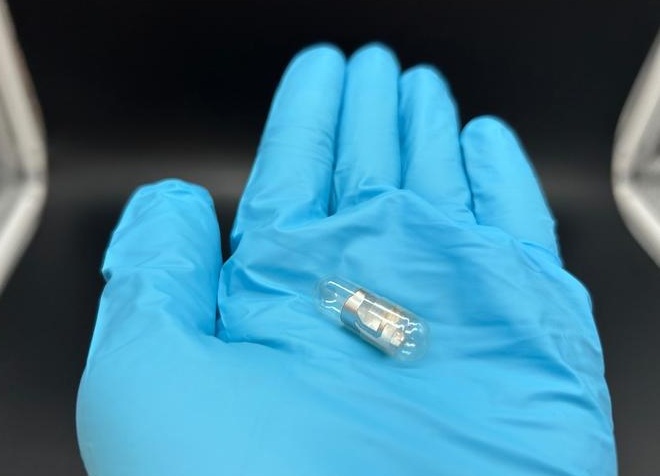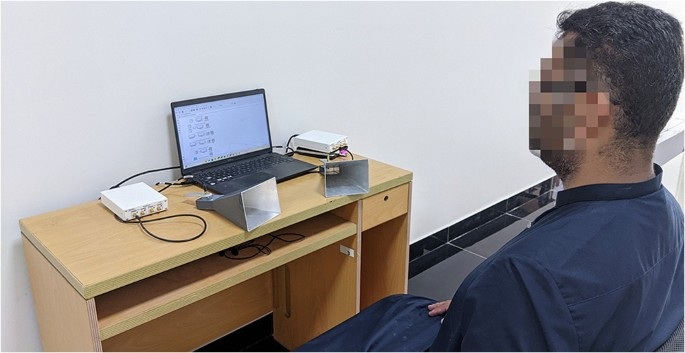Rerouting Nerves During Amputation Reduces Phantom Limb Pain
|
By HospiMedica International staff writers Posted on 09 Jan 2019 |

Image: A new study asserts that redirecting nerves severed during limb amputation can reduce phantom pain (Photo courtesy of 123rf).
A novel surgical procedure developed for advanced prosthetics can prevent or reduce debilitating phantom limb and stump pain in amputees, according to a new study.
Researchers at Ohio State University (OSU; Columbus, USA) conducted a study in 22 patients in order to evaluate the results of primary targeted muscle reinnervation (TMR) for below-the-knee amputations. The procedure involves rerouting the severed motor nerves by surgically transferring them to the motor points of the denervated target muscles, which, after reinnervation, can contract in response to neural control signals intended for the missing limb. The operation of the prosthesis thus occurs in response to attempts to move the missing limb, making control easier and more intuitive.
All subjects denied neuroma pain following amputation. Each patient was followed on an outpatient basis for one year to evaluate early symptoms of neuroma or phantom limb pain, patient satisfaction, and functionality. The researchers also found that over the course of three years, none of the patients developed symptomatic neuromas, and only 13% of those who received primary TMR reported pain six months later. In addition, by creating the additional control sites, TMR eliminated the need to switch the prosthesis between different control modes. The study was published in the January 2019 issue of Plastic and Reconstructive Surgery.
“A significant amount of pain in amputees is caused by disorganized nerve endings, i.e. symptomatic neuromas, in the residual limb. They form when nerves are severed and not addressed, thus they have nowhere to go,” said senior author Ian Valerio, MD, of the department of plastic and reconstructive surgery at OSU. “Attaching those cut nerve endings to motor nerves in a nearby muscle allows the body to re-establish its neural circuitry. This alleviates phantom and residual limb pain by giving those severed nerves somewhere to go and something to do.”
“TMR allows for more individual muscle unit firings through the patient's thoughts. It provides for better intuitive control, resulting in more refined functional movements and more degrees of motion by an advanced prosthetic,” concluded lead author J. Byers Bowen, MD, of OSU. “When done at the time of initial amputation, there is minimal health risk, and recovery is similar to that of traditional amputation surgery.”
Approximately 25% of major limb amputees will develop chronic localized symptomatic neuromas and phantom limb pain in the residual stump or limb. Previous studies show that secondary targeted reinnervation successfully treats and, in some cases, resolves peripheral neuropathy and phantom limb pain in patients who have undergone a previous amputation.
Related Links:
Ohio State University
Researchers at Ohio State University (OSU; Columbus, USA) conducted a study in 22 patients in order to evaluate the results of primary targeted muscle reinnervation (TMR) for below-the-knee amputations. The procedure involves rerouting the severed motor nerves by surgically transferring them to the motor points of the denervated target muscles, which, after reinnervation, can contract in response to neural control signals intended for the missing limb. The operation of the prosthesis thus occurs in response to attempts to move the missing limb, making control easier and more intuitive.
All subjects denied neuroma pain following amputation. Each patient was followed on an outpatient basis for one year to evaluate early symptoms of neuroma or phantom limb pain, patient satisfaction, and functionality. The researchers also found that over the course of three years, none of the patients developed symptomatic neuromas, and only 13% of those who received primary TMR reported pain six months later. In addition, by creating the additional control sites, TMR eliminated the need to switch the prosthesis between different control modes. The study was published in the January 2019 issue of Plastic and Reconstructive Surgery.
“A significant amount of pain in amputees is caused by disorganized nerve endings, i.e. symptomatic neuromas, in the residual limb. They form when nerves are severed and not addressed, thus they have nowhere to go,” said senior author Ian Valerio, MD, of the department of plastic and reconstructive surgery at OSU. “Attaching those cut nerve endings to motor nerves in a nearby muscle allows the body to re-establish its neural circuitry. This alleviates phantom and residual limb pain by giving those severed nerves somewhere to go and something to do.”
“TMR allows for more individual muscle unit firings through the patient's thoughts. It provides for better intuitive control, resulting in more refined functional movements and more degrees of motion by an advanced prosthetic,” concluded lead author J. Byers Bowen, MD, of OSU. “When done at the time of initial amputation, there is minimal health risk, and recovery is similar to that of traditional amputation surgery.”
Approximately 25% of major limb amputees will develop chronic localized symptomatic neuromas and phantom limb pain in the residual stump or limb. Previous studies show that secondary targeted reinnervation successfully treats and, in some cases, resolves peripheral neuropathy and phantom limb pain in patients who have undergone a previous amputation.
Related Links:
Ohio State University
Latest Surgical Techniques News
- Minimally Invasive Coronary Artery Bypass Method Offers Safer Alternative to Open-Heart Surgery
- Injectable Breast ‘Implant’ Offers Alternative to Traditional Surgeries
- AI Detects Stomach Cancer Risk from Upper Endoscopic Images
- NIR Light Enables Powering and Communicating with Implantable Medical Devices
- Simple Bypass Protocol Improves Outcomes in Chronic Cerebral Occlusion
- Implantable Absorbable Sensor Detects Life-Threatening Complications After Intestinal Surgery
- New Study Findings Enable Improved Ventilation During Complex Lung Surgery
- 3D-Printed Blood Vessel Scaffolds Could Transform Heart Bypass Surgeries
- Novel Imaging Technique Helps View Blood Perfusion During Esophageal Surgery
- Minimally Invasive Surgery Proven Safe and Effective for Complex ‘Whipple’ Procedure
- Catheter-Based Procedures Offer Less Invasive Option for Treatment of Valvular Disease
- Laparoscopic Surgery Improves Outcomes for Severe Newborn Liver Disease
- Novel Endoscopy Technique Provides Access to Deep Lung Tumors
- New Study Findings Could Halve Number of Stent Procedures
- Breakthrough Surgical Device Redefines Hip Arthroscopy
- Automated System Enables Real-Time "Molecular Pathology" During Cancer Surgery
Channels
Critical Care
view channel
Pill Reports from Stomach When It Has Been Swallowed
Failure to take medications on time is a major challenge in healthcare and contributes to hundreds of thousands of preventable deaths and billions of dollars in avoidable costs each year.... Read more
Wireless Sensing Technology Enables Touch-Free Diagnostics of Common Lung Diseases
Diagnosing lung diseases often requires physical contact, imaging scans, or specialized equipment, which can limit access in low-resource settings and increase infection risk during outbreaks.... Read more
Early Detection and Targeted Blood Purification Could Prevent Kidney Failure in ICU Patients
Acute kidney injury (AKI) is one of the most dangerous complications in intensive care units, affecting up to half of critically ill patients and sharply increasing mortality risk. A common but preventable... Read morePatient Care
view channel
Revolutionary Automatic IV-Line Flushing Device to Enhance Infusion Care
More than 80% of in-hospital patients receive intravenous (IV) therapy. Every dose of IV medicine delivered in a small volume (<250 mL) infusion bag should be followed by subsequent flushing to ensure... Read more
VR Training Tool Combats Contamination of Portable Medical Equipment
Healthcare-associated infections (HAIs) impact one in every 31 patients, cause nearly 100,000 deaths each year, and cost USD 28.4 billion in direct medical expenses. Notably, up to 75% of these infections... Read more
Portable Biosensor Platform to Reduce Hospital-Acquired Infections
Approximately 4 million patients in the European Union acquire healthcare-associated infections (HAIs) or nosocomial infections each year, with around 37,000 deaths directly resulting from these infections,... Read moreFirst-Of-Its-Kind Portable Germicidal Light Technology Disinfects High-Touch Clinical Surfaces in Seconds
Reducing healthcare-acquired infections (HAIs) remains a pressing issue within global healthcare systems. In the United States alone, 1.7 million patients contract HAIs annually, leading to approximately... Read moreHealth IT
view channel
EMR-Based Tool Predicts Graft Failure After Kidney Transplant
Kidney transplantation offers patients with end-stage kidney disease longer survival and better quality of life than dialysis, yet graft failure remains a major challenge. Although a successful transplant... Read more
Printable Molecule-Selective Nanoparticles Enable Mass Production of Wearable Biosensors
The future of medicine is likely to focus on the personalization of healthcare—understanding exactly what an individual requires and delivering the appropriate combination of nutrients, metabolites, and... Read moreBusiness
view channel
Philips and Masimo Partner to Advance Patient Monitoring Measurement Technologies
Royal Philips (Amsterdam, Netherlands) and Masimo (Irvine, California, USA) have renewed their multi-year strategic collaboration, combining Philips’ expertise in patient monitoring with Masimo’s noninvasive... Read more
B. Braun Acquires Digital Microsurgery Company True Digital Surgery
The high-end microsurgery market in neurosurgery, spine, and ENT is undergoing a significant transformation. Traditional analog microscopes are giving way to digital exoscopes, which provide improved visualization,... Read more
CMEF 2025 to Promote Holistic and High-Quality Development of Medical and Health Industry
The 92nd China International Medical Equipment Fair (CMEF 2025) Autumn Exhibition is scheduled to be held from September 26 to 29 at the China Import and Export Fair Complex (Canton Fair Complex) in Guangzhou.... Read more














